The OPPO Reno 10x Zoom Review: Bezeless Zoom
by Andrei Frumusanu on September 18, 2019 10:00 AM EST- Posted in
- Mobile
- Smartphones
- Oppo
- Snapdragon 855
- Oppo Reno 10x Zoom
Camera - Low Light Evaluation
We’ve had the Reno 10x in camera comparisons in previous articles, but as mentioned in the introduction of the device, Oppo was able to update its software over the last few months. The one area where there has been significant advancements in is in terms of low-light photograph and an apparent new night mode.
Previously, the original Night mode on the Reno was a dedicated mode one had to select to use. In newer firmware updates, the Reno now will automatically select a new kind of night mode in lower light conditions, and this is characterised by the camera app doing three quick shutter animations and sounds. We’ll see how this has changed, and how the new mode compares against the competition.
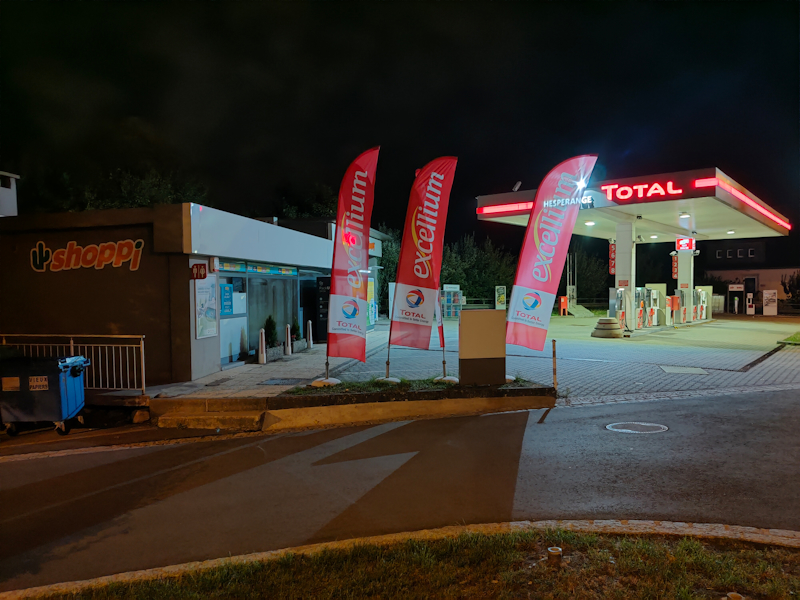
[ Reno 10x ]
[ S10+ (E) ] - [ S10+ (S) ]
[ Xperia 1 ] - [ P30 Pro ] - [ Mi9 ]
[ G8 ] - [ BlackShark 2 ] - [ RedMagic 3 ] - [ Pixel 3 ]
At first glance, the one thing that pops out in this shot is that it feels relatively flat. Indeed looking at the histogram of the image, it looks like the phone 20-30% of the highlights even though there’s a bright spotlights in the scene.
However looking closer at the rest of the shot, we’re seeing some actual impressive levels of detail retention that in fact rivals the best we’ve seen from Google, Huawei and Samsung.
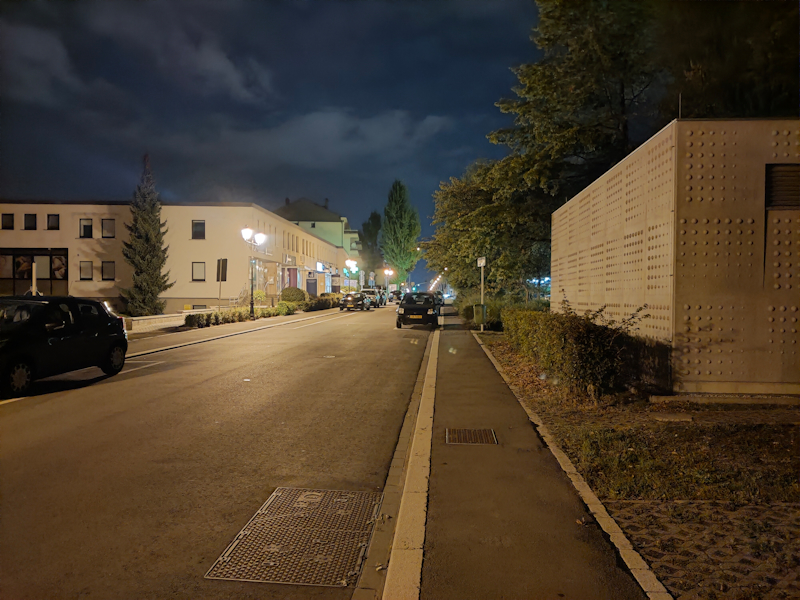
[ Reno 10x ]
[ S10+ (E) ] - [ S10+ (S) ]
[ Xperia 1 ] - [ P30 Pro ] - [ Mi9 ]
[ G8 ] - [ BlackShark 2 ] - [ RedMagic 3 ] - [ Pixel 3 ]
In the next shot the Reno’s new night mode is again extremely competitive. The one issue in this shot is that the phone is getting the colour temperature quite wrong, not properly capturing the orange light of the sodium street lamps. There are different levels of pure detail and noise reduction between all the different phones with night mode here, but the Oppo does belong amongst the group of phones that now produce quite detailed night shots.
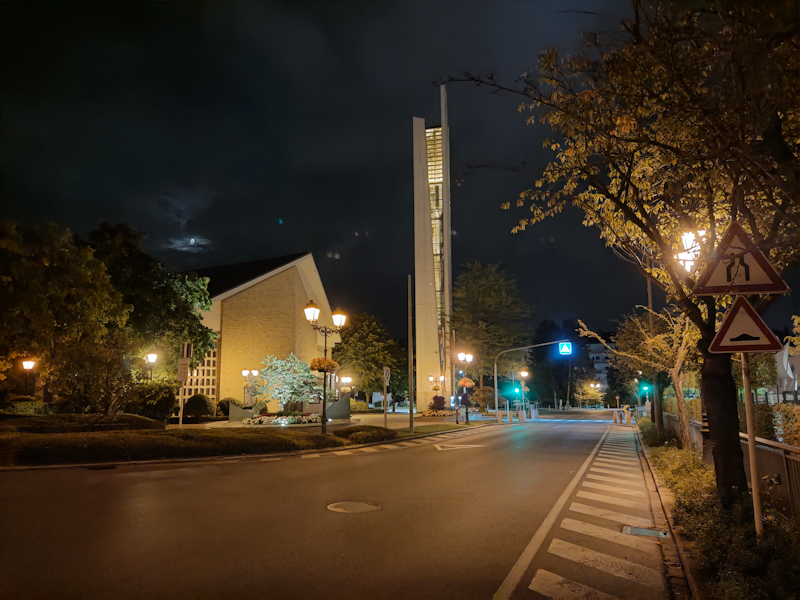
[ Reno 10x ] [ S10+ (E) ] - [ S10+ (S) ]
[ Xperia 1 ] - [ P30 Pro ] - [ Mi9 ]
[ G8 ] - [ BlackShark 2 ] - [ RedMagic 3 ] - [ Pixel 3 ]
In the next shot again, I think that algorithmically in terms of producing a brighter image out of several low-light results, the new Oppo firmware is extremely competitive. There’s still issue such as again the colour balance being off here.
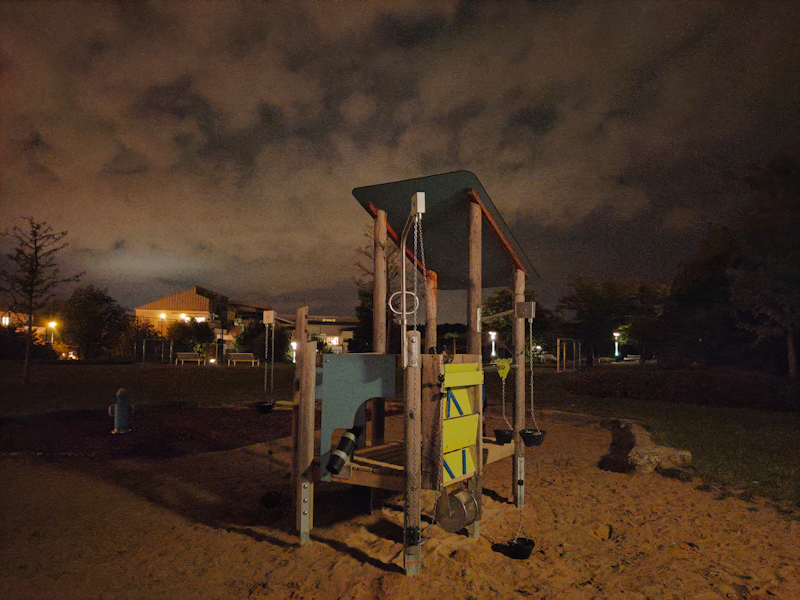
[ Reno 10x ]
[ S10+ (E) ] - [ S10+ (S) ]
[ Xperia 1 ] - [ P30 Pro ] - [ Mi9 ]
[ G8 ] - [ BlackShark 2 ] - [ RedMagic 3 ] - [ Pixel 3 ]
The next shot is something we’ve tested in the past with the Reno 10x, however at the time the phone couldn’t capture very much of this scene. Today, at least when looking at the thumbnail, the Reno is able to capture significant amount of light rivalling other phones. When looking into closer detail however we see the result is extremely noisy. Investigating the EXIF shows that the shot seemingly was done at ISO1408, which I didn’t even know was possible out of the IMX586.
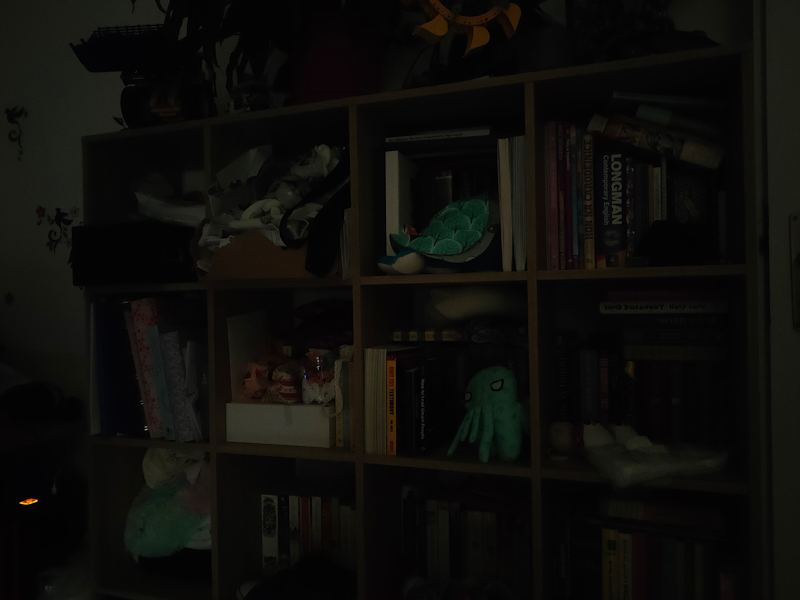
[ Reno 10x ] [ S10+ (E) ] - [ S10+ (S) ]
[ Xperia 1 ] - [ P30 Pro ] - [ Mi9 ]
[ G8 ] - [ BlackShark 2 ] - [ RedMagic 3 ] - [ Pixel 3 ]
Finally, going even lower light and indoors, the phone abandons any attempt to get a good capture. It seems it’s at this point where the sensor’s physical capabilities have reached an end and the software doesn’t know how to improve things anymore.
Low-light Conclusion
The one thing we came to a conclusion to today is the fact that Oppo has now itself onto the list of vendors who have proper computational photography night modes. Oppo’s implementation seems to be able to retain a lot of detail of the natural scene, in this regard competing against what we’ve seen from Google, Huawei and Samsung. It’s still lacking in terms of colour balance, and in certain conditions it does fall behind. These latter scenarios is I think just a limitation of the IMX586 – although again Huawei/Honor has also shows that’s possible to get more out of the sensor.
Overall, the Reno 10x does adequately in low-light, which is something great to see as it means that future devices from the vendor will only continue to iterate and improve upon the current results.










40 Comments
View All Comments
Andrei Frumusanu - Wednesday, September 18, 2019 - link
Forgot to edit that subtitle.DanNeely - Wednesday, September 18, 2019 - link
Page1: "The display is an AMOLED panel featuring a 2340 x 1080 resolution and comes at a rather large diameter of 6.6”. " diameter should be diagonal.DanNeely - Wednesday, September 18, 2019 - link
"Oppo alleviates this concern by including a small raised nub below the cameras, causing the phone to never actually be flush against any surfaces and thus vastly reducing possible scratches of the back glass near the cameras."Does this mean that if you set it down on the table and try to use it you're going to have a wobbly bad time?
Andrei Frumusanu - Wednesday, September 18, 2019 - link
It wobbles if you press the top of the screen, the bottom 2/3rds are stable.trivik12 - Wednesday, September 18, 2019 - link
Since almost all flagship phones have night mode, can we do a shoot out and provide us strength and weakness plus overall winner. I guess best time would be when Pixel 4 is released.flyingpants265 - Wednesday, September 18, 2019 - link
-Needs front stereo speakers which allows you to hear youtube videos, movies, emulator games, camera videos, etc in full volume.-And wireless charging which is extremely useful, no port wear, start charging faster/with one hand, magnetic charging mount in the car.. Still use it all the time on my Nexus 5. Wireless charging pad cost me $3.00 on ebay.
-The missing 3.5 headphone jack is not really ideal..
melgross - Wednesday, September 18, 2019 - link
I’m not convinced that a pop up camera is a good idea, particularly if all that mechanics and electronic is there to just eliminate a hole in the screen.Notice that there’s no water and dust rating. That’s because it’s almost impossible to keep water and dust out of the slot. I can see grit from wind picking it up, being deposited inside that slot, eventually scratching the lenses and eventually causing the module to grind to a halt. Moisture too. It will remain in the slot for some time, causing problems.
eastcoast_pete - Wednesday, September 18, 2019 - link
Thanks Andrei! Agree with you and others here that the pop up camera is a gimmick that adds complexity and weight, not to mention anything that moves is another thing that can break. Too bad Oppo didn't put the extra weight and complexity to make a really good periscope style optical zoom camera - if done correctly, they can be spectacular.@Andrei: Lastly, one question and request: what about the call quality of this and other phones? Please add a sentence or two on this to your reviews, good call quality is a non-negotiable for me and probably many others.
I do use my smartphone as my main phone, and had to bench/retire my Xiaomi Mi Max 3 phone due to really horrible call quality (on both sides, got many complaints over poor voice quality). I loved many aspects of that phone, especially the big screen and battery, but it was basically useless as a daily driver. Now back to an older LG phone, not as good otherwise, but I can make and receive clear phonecalls.
PreacherEddie - Wednesday, September 18, 2019 - link
I believe the top of page 2 comes from a previous review and you need to edit it for the Oppo.edsib1 - Wednesday, September 18, 2019 - link
I have no idea how your Oppo10x zooms scores so low in benchmarks. My UK version scores very high in all benchmark scores. Antutu score of 370k, geekbench 4score 3514/11314 . Pcmark work2 performance score is 10564